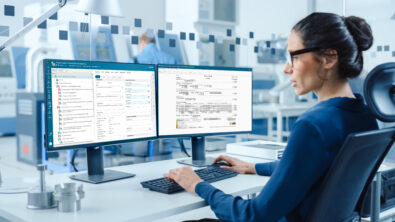Document Management – Definitions and Deployment are Changing in a Digital World

Document management within our companies is changing faster than ever. In AIIM’s “Content Management 2020: Thinking Beyond ECM” John Mancini notes this migration and exponential growth from distinct eras of Document Management capabilities.For example, the Document Management and Workflow Era of the 1980s and 90s, which focused on replacing paper with digital documents, often within an organizations LAN, trying to get “the right document to the right person at the right time.” Then came the Enterprise Content Management Era in the early 2000s focused on capabilities that captured, managed, stored and delivered critical business information or “content” – still largely managed on a page basis, as a document.
Now we’re seeing a further change, this one regarding the definition of the document, from a traditional static image that must be “written” and “edited” to a snapshot of content that can be comprised of system-generated or user contributed content from our mobile, analytics, cloud and collaborative (MACC) world.
We’re generating information at an amazing rate. KPCB, in this year’s Meeker report on internet trends, cites +50% CAGR each year since 2010, and that trend is expected to continue.
 Source: Internet trends report 2016, Mary Meeker, KPCB, May 2016
Source: Internet trends report 2016, Mary Meeker, KPCB, May 2016
But if we generate all this information in documents does that really improve the way we do business? With all this information overload, what best practices still apply, or what new ones are needed?
First, capture content as close as possible to the point of origin. This is always a best practice, because that’s when information is both most accurate and easiest to capture. With application and database capabilities available now, most business critical process artifacts can be at least partially generated.
This leads to the second best practice: It’s ok to remove the document from the process. System records with date stamped approvals cover a significant portion of the forms and tracking documents we’ve been using for decades. If the data will cover your needs, let it – don’t create another object that needs to be managed and updated. Let go of page-based content that can be printed, and embrace electronic data when it’s available.Capture that data as a by-product of the task – don’t create an extra step users to create or fill out a form or document just to pass a milestone or gate.

Document management composed of electronic data assembled into documents.
If you must use a document to meet your record requirements then take advantage of the ability to exchange that system data with the right fields in your document so you’re ensuring accurate and up-to-date content with the least effort from your users and link to the data you already have. That’s best practice number three: reuse the content you have directly. There’s already a wealth of information available in Teamcenter – let’s not duplicate it in yet another document.
Best practice four: the first rule of system enhancements and migration is still applicable. Don’t just migrate, re-engineer and optimize. As we migrate to new systems, we need to rethink how we manage and track our business processes. Instead of emulating the document-based process, give them just what they need for that task, with links to backup data. In addition to cost efficiencies this will make life easier for users, who often don’t need all the documents we give them to complete a task.
Document Management needs to be both easy to use as well as consistent and complete in this MACC world we live in. Systems that our end users won’t use – because of too many clicks or too much data to weed through – can jeopardize the overall product costs and the speed with which we innovate.
Think of your document and PLM system as an enabling platform – it’s not a library and it’s not an application. It should allow you to streamline your processes and information – not just enable old processes in a digital environment.
About the Author

Trish Laedtke is the Product Manager for Content and Document Management applications in Teamcenter. Her focus is on integrating tech pubs and supporting roles into the PLM environment, and taking advantage of the knowledge stored in Teamcenter to provide more accurate and effective documentation.


